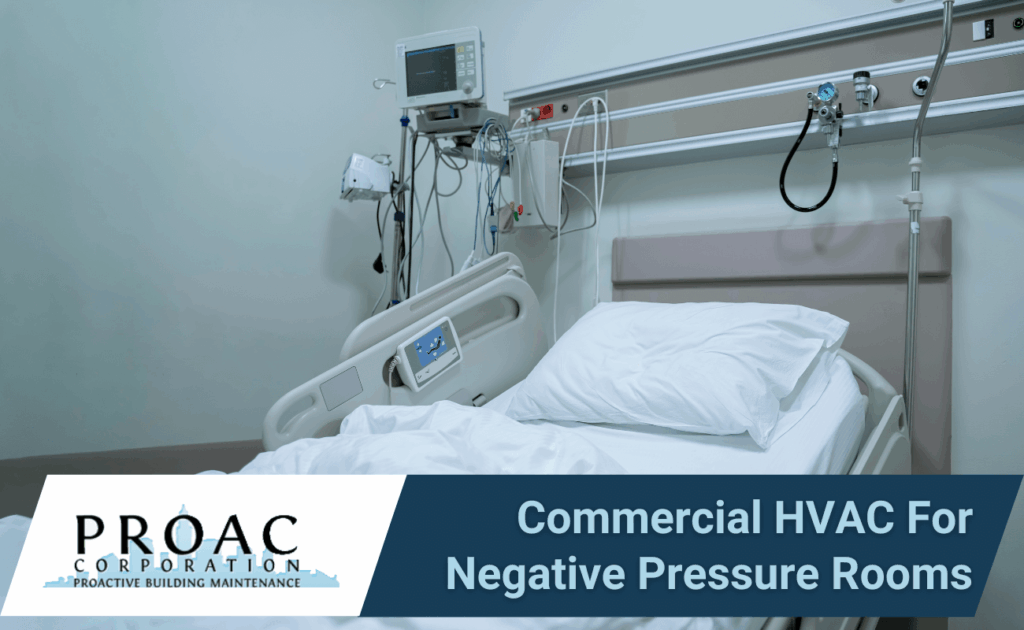Negative pressure rooms, or isolation rooms, are a key part in keeping your hospital safe and minimizing the risk of an outbreak of a dangerous illness. They allow you to take care of patients with extremely contagious diseases like measles, tuberculosis, COVID-19, and others, while also protecting others. By controlling the pressure in the rooms as well as making sure that contaminated air is channeled through the proper filtration systems, these rooms prevent pathogens from escaping into hallways and other rooms. But if the HVAC systems in negative pressure rooms are not working properly, the results could be catastrophic. Let’s look at how negative pressure rooms could be compromised, and how to prevent it.
Hospitals Are Full Of Large Particles
Not only are hospitals filled with all sorts of viruses, bacteria, and other nasty microbes, but they also have a wide variety of other substances polluting the air. Large particles such as latex dust, cotton fibers, or even biological materials like dead skin cells or hair follicles are likely to get into the air in hospital settings. When this happens in an isolation room, all of the large particles are sucked up into the filtration system, and can potentially create blockages.
Blockages Reduce Effectiveness
If the ductwork for your hospital’s negative pressure rooms are full of large particles, it will significantly restrict airflow coming out of the isolation room. These dirty exhausts will work for a short while, but eventually the blockage will overwhelm the system, and the contaminated air will no longer be properly filtered before entering your hospital’s main ventilation system.
A Compromised System Brings Serious Consequences
When a blockage becomes too big and overwhelms the isolation room’s ventilation system, it loses its negative pressure. This means that when the entrance is opened, the contaminated air will rush into the hallway, instead of clean air flowing into the room. When this happens, it doesn’t take long for the contagious particles to flow through both the corridors and rooms, as well as the hospital’s general ventilation system. This now puts everyone in your facility at the risk of contracting these contagious diseases, often without them knowing. It then doesn’t take long for the outbreak to spread outside of the hospital, making it almost impossible to stop.
How Can This Be Prevented?
While an outbreak of a highly contagious disease from an isolation room is a serious danger, there is a simple way to prevent it. The best form of prevention is to make sure that these rooms receive regular and frequent HVAC maintenance. During maintenance, your filters and duct work will be cleaned and any blockages will be removed before they can become a larger problem. Additionally, the system will receive routine inspections, ensuring that any other issues will be caught and fixed before they can get worse and compromise the system. It’s hard to believe that such a routine procedure can stop such a potential crisis, but it’s true!
Looking For HVAC Maintenance For Negative Pressure Rooms? Choose PROAC!
If you are ready to protect your patients and staff from dangerous outbreaks, contact PROAC to get started. We have the experience and resources to keep your isolation rooms working effectively and reliably. Negative pressure room HVAC maintenance is too serious to ignore. Reach out for a free quote today to see how we can help you!

